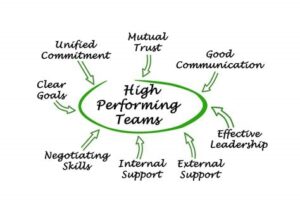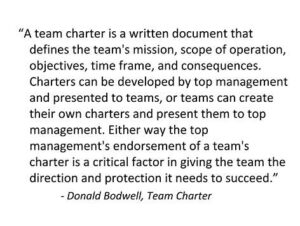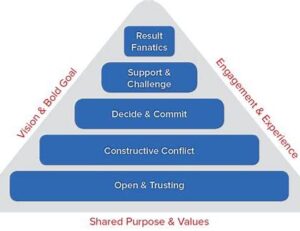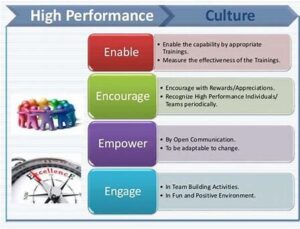High-performing teams are groups that consistently achieve superior results compared to their peers, largely due to their unique composition and execution of key strategies. These teams aren’t just about talented individuals; they’re more about how these individuals work together to create something greater than the sum of their parts.

One crucial aspect that makes these teams successful is the establishment and development of core competencies. Competencies, such as strong communication, collaboration, adaptability, and a sense of shared purpose, are fundamental. They act as the building blocks for a team that not only meets targets but exceeds them regularly.
click here to start your own online business for free Ced0224
In addition to competencies, characteristics such as trust, accountability, commitment, and a focus on results are what truly set high-performing teams apart. Members feel safe to express ideas, take risks, and rely on each other, fostering an environment that optimizes productivity and creativity.
Understanding the underlying frameworks that explain team dynamics can also offer valuable insights. Models like Tuckman’s stages of group development—forming, storming, norming, and performing—provide a roadmap for team growth. By grasping these stages, leaders can guide their teams more effectively, ensuring that they work through challenges and emerge stronger.

Developing a high-performing team involves more than just assembling a group of talented people; it requires nurturing their skills, fostering a collaborative environment, and aligning individual goals with the team’s mission. By understanding and implementing these principles, teams can become engines of success, driving organizations forward.
Key Strategies for Building High-Performing Teams
Establishing a high-performing team calls for deliberate strategies that encompass every stage of team development. To start with, setting clear, attainable goals is vital. A team thrives when everyone understands what they’re working toward and why it’s important.
Utilizing frameworks and models can steer this development in the right direction. Frameworks such as Belbin’s team roles help identify individual strengths and traits, ensuring each team member is in the right role. Such structured approaches lay solid foundations, balancing diverse skills and personalities.
The assignment of roles and responsibilities is another crucial factor. This ensures that each member knows their contribution towards the group’s objectives. By clearly defining responsibilities, the team can prioritize tasks, minimize overlap, and maximize efficiency.

Behavior is key in a team setting. Encouraging behaviors like open communication, active listening, and mutual respect can elevate a group from mere cooperation to genuine collaboration. Leaders should model these behaviors, fostering a positive environment that encourages others to engage similarly.
Developing a high-performing team is not something that can be rushed. It requires investment in the people, processes, and tools that facilitate effective teamwork. Implementing these strategies ensures that teams are not just well-formed, but also well-functioning, capable of tackling even the most complex challenges efficiently.
Creating and Sustaining High Performance
Maintaining the momentum of high performance in a team requires consistent effort and strategic nurturing. A vital element in this process is establishing a clear vision along with measurable goals. Teams must have a unified direction, with each member understanding not just what the goals are, but their role in achieving them.
Building a strong team culture hinges on fostering trust and transparency. This involves creating an environment where team members feel valued and empowered to contribute ideas. Regular, open communication helps in ironing out misunderstandings before they become obstacles, keeping the team aligned and informed.
Collaboration is fundamental, and establishing effective communication protocols can make all the difference. Whether it’s through regular check-ins or collaborative tools, ensuring that team members can easily communicate and collaborate is essential for maintaining smooth operations and swift problem-solving.

Continuous learning and development are just as critical. Encouraging a culture of ongoing education—be it through workshops, courses, or informal knowledge-sharing sessions—ensures that skills remain sharp and relevant. This not only boosts individual capabilities but keeps the team competitive and innovative.
By focusing on these strategic areas, teams can not only build high performance but sustain it long-term. It’s about creating a culture where excellence is the norm, and where team members have the support and resources they need to thrive.
Measuring Success and Overcoming Challenges
Understanding whether your team is truly high-performing requires clear metrics and regular evaluation. It’s important to establish key performance indicators (KPIs) that align with your goals and track them consistently. This data-driven approach helps in identifying areas of strength and those needing improvement.
However, even the most well-oiled team can face hurdles. Being proactive in identifying potential barriers is essential. These may include miscommunication, resource limitations, or interpersonal conflicts. Tackling such issues head-on with tact and transparency can prevent them from escalating.

Learning from the successes of other high-performing teams can provide valuable insights. Examining case studies allows for an understanding of what strategies and practices have worked in other contexts and how they might be adapted to fit your own team’s needs.
Looking forward, staying tuned to emerging trends in team dynamics and performance enhancement is key. As technology advances, tools that support collaboration and remote working continue to evolve, offering new ways to elevate team performance.
To maintain a high-performing team, a commitment to innovation, continuous improvement, and adaptability is essential. It ensures that the team not only meets its current objectives but is also well-prepared for the challenges and opportunities of the future.
